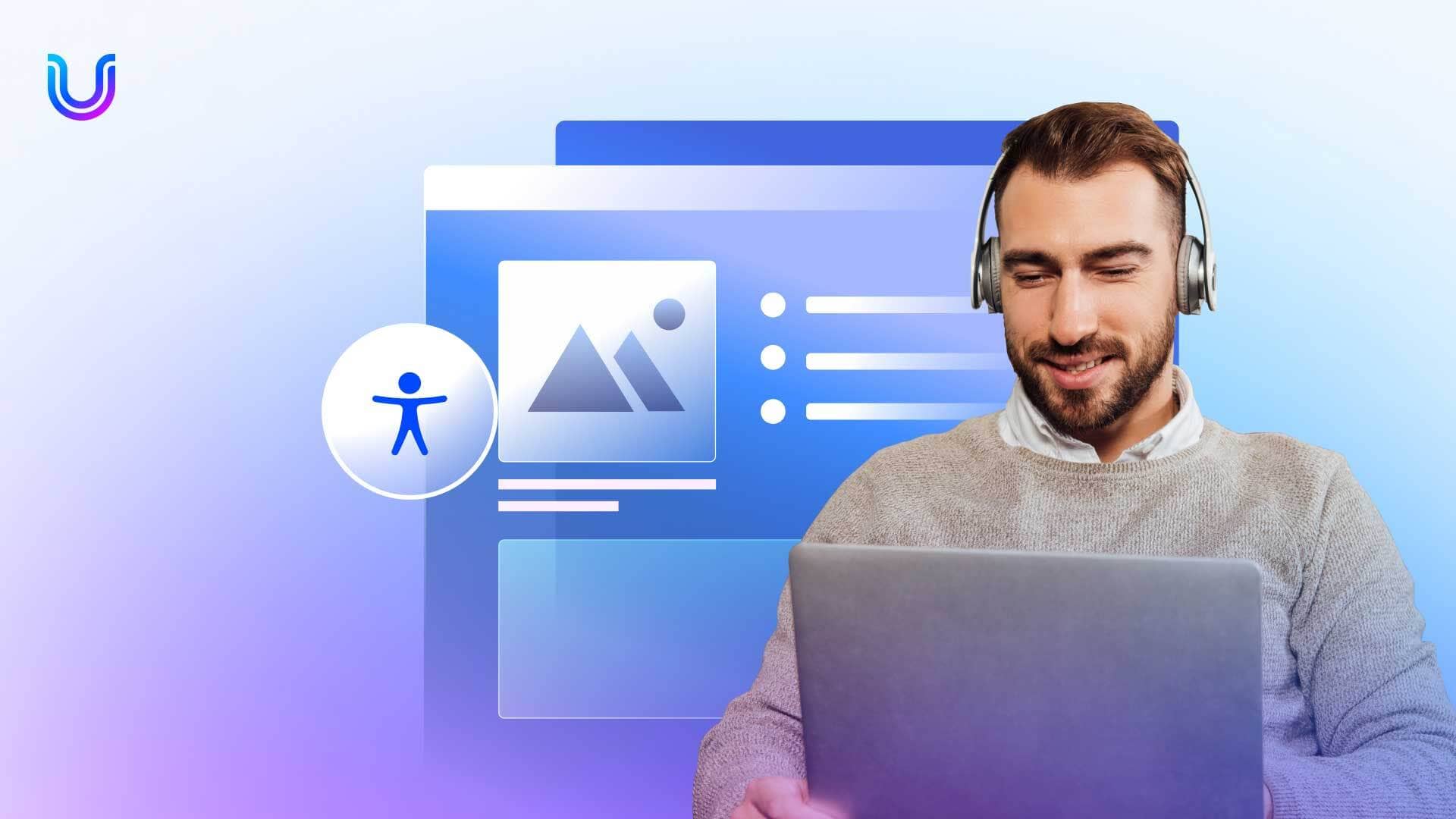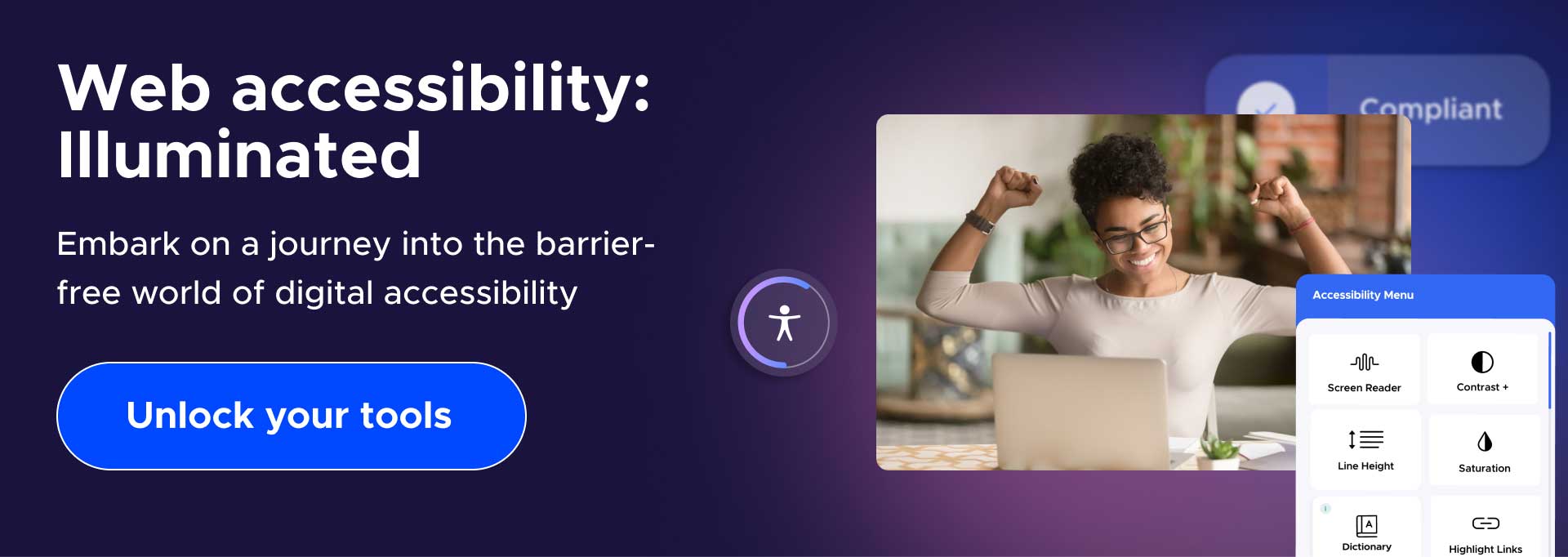Empowering independence: enhancing web accessibility for the Blind

In today’s interconnected world, the Internet is vital for accessing information, connecting with others, and engaging in various activities. However, for blind people and those with other visual impairments, navigating the digital landscape has significant challenges. That’s why web accessibility for the blind has never been more essential. Fortunately, technological advances and a growing emphasis on accessibility have paved the way for a more inclusive online experience.
This blog explores the importance of web accessibility for blind people, assistive technologies that empower independence, and the role of accessible websites and website readers in enhancing accessibility.
Why is Web Accessibility Critical for Blind People?
Digital accessibility transcends making websites usable, aiming to empower everyone to thrive in the digital world. The World Health Organization estimates 285 million people globally have vision-related impairments, and most have blindness or low vision.
Access to information and online services is critical for education, employment, social inclusion, and daily living. Giving everyone access to your website makes it a friendly, barrier-free place for people with blindness, low vision, and other related challenges.
In addition to technical considerations, promoting awareness and education about web accessibility encourages inclusivity and independence. Organizations and web developers should prioritize accessibility training and resources to ensure proper design and development. Raising awareness about web accessibility and providing the necessary tools and support creates a more inclusive web where everyone can participate fully and independently.
How Does The Law Apply To Assistive Technology for People With Blindness?
Improving digital inclusion isn’t the only critical reason for prioritizing web accessibility. Legal implications can put your company at risk if it doesn’t comply with specific web accessibility standards. So, do websites have to be accessible to people with vision-related disabilities? In short, digital accessibility is the law according to the ADA. Specifically, websites must be compatible with screen readers and other assistive technologies to meet WCAG accessibility standards and guidelines. The Rehabilitation Act of 1973 prohibits discrimination based on disability and applies to all federally-funded programs and activities.
If your website isn’t inclusive to people with blindness, your company could be vulnerable to accessibility-related lawsuits that the Department of Justice is increasingly enforcing. The good news is there are software providers that can quickly and efficiently improve your accessibility and compliance efforts, helping mitigate damaging legal exposure. Above all, it’s better to act now than pay later.
How Can We Make Websites Easier for People with Blindness?
Assistive technology for blind people and other disabilities is a rapidly emerging market. But what exactly do these tools perform? For instance, why do websites have braille mode? Screen readers (website readers for people who are blind) are among the most widely used assistive technologies. These software programs convert text and other visual elements on a webpage into speech or Braille output, allowing users to navigate websites through auditory or tactile feedback. Screen readers provide access to a wide range of online content, including websites, documents, emails, and multimedia.
Moreover, specialized website readers for blind users offer additional functionality and customization options. These tools provide features such as voice control, speech synthesis, Braille output, and text customization settings, allowing users to personalize their browsing experience according to their preferences and needs. Website readers can also provide additional context and navigation aids, such as headings, links, and landmarks, to help users navigate complex web pages more efficiently.
In addition to screen readers, various other assistive technologies are designed specifically for blind individuals.
- Optical character recognition (OCR) software, for example, enables users to convert printed text into digital formats, making printed materials accessible through speech or Braille output.
- Braille displays provide tactile feedback by translating on-screen text into Braille characters, allowing users to read and navigate content without relying solely on auditory feedback.
- Voice-controlled devices and intelligent assistants offer hands-free interaction with digital devices and services, further enhancing independence and accessibility for blind users.
- Alt Text for images conveys the meaning of images as they relate to surrounding web content. Screen reader software reads it aloud to display to the end-user when images don’t load properly.
- Keyboard navigation ensures all users can access content without a mouse.
How Can We Build On Web Accessibility for the Blind?
Web accessibility for blind people supports across-the-board independence and inclusivity in the digital age. By leveraging assistive technologies, creating accessible websites, and promoting awareness and education, we can empower people to navigate the digital landscape confidently and independently.
But we can never lose sight of accommodating all disabilities. You need a comprehensive approach to web development to ensure people of different abilities experience your website and other digital assets the same way. Together, let’s work towards a future where everyone can fully participate and benefit from the opportunities the Internet offers.
How Can We Build On Web Accessibility for the Blind?
Web accessibility for blind people supports across-the-board independence and inclusivity in the digital age. By leveraging assistive technologies, creating accessible websites, and promoting awareness and education, we can empower people to navigate the digital landscape confidently and independently.
But we can never lose sight of accommodating all disabilities. You need a comprehensive approach to web development to ensure people of different abilities experience your website and other digital assets the same way. Together, let’s work towards a future where everyone can fully participate and benefit from the opportunities the Internet offers.
UserWay: Better Web Accessibility for Everyone
UserWay’s complete line of AI-powered tools can improve your digital accessibility and compliance for people of all different abilities and backgrounds.
Take the first step towards better accessibility today.
Answers to Common FAQs
Does My Website Have to be Accessible for the Blind?
The Americans with Disabilities Act (ADA) requires that your website be accessible to people with disabilities. According to the Act, commercial websites must conform to specific web content accessibility guidelines.
What Happens If A Website Isn’t ADA-compliant?
Failure to comply can make your company vulnerable to accessibility-related lawsuits. It can also damage your reputation for not embracing digital inclusivity in a society that increasingly demands it.
What’s The Most Effective Accessibility Tool for People with Vision Impairments?
Screen readers are the most helpful accessibility tool for visual impairments. This powerful software turns text and graphics into braille.





Share